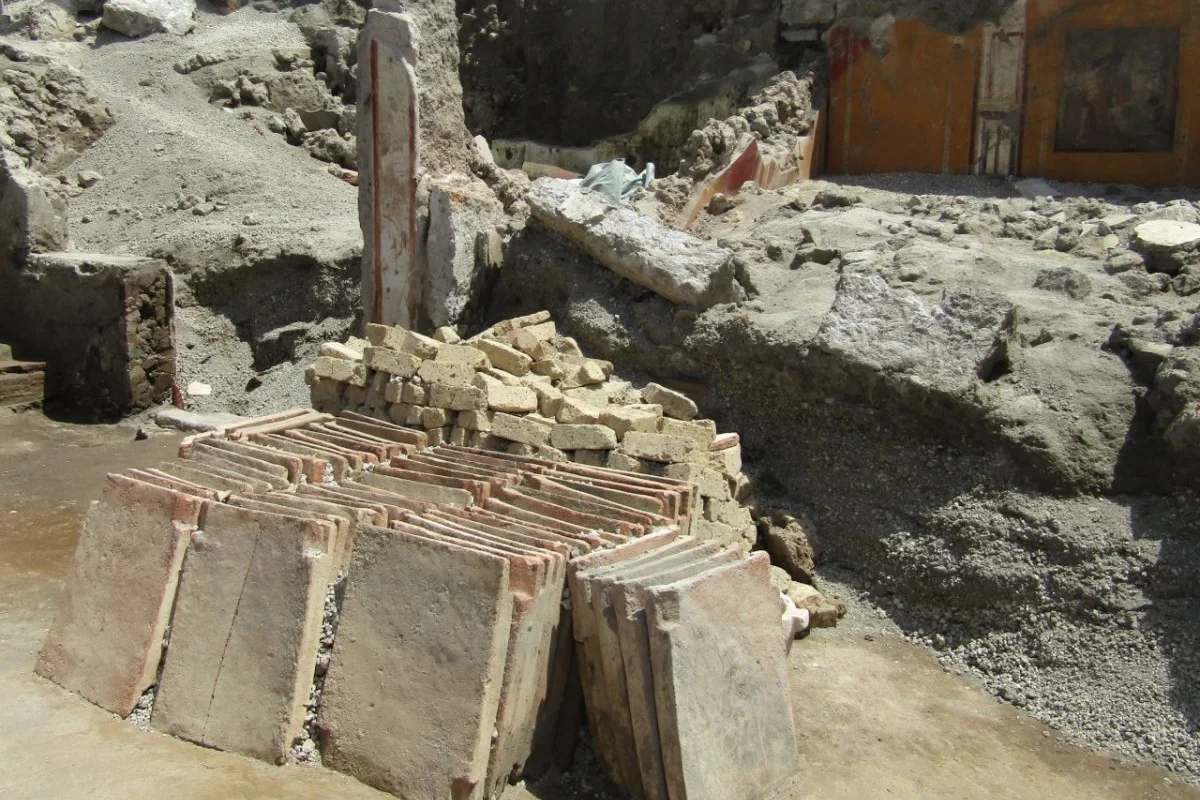Archaeologists have uncovered a Roman construction site during excavations of Regio IX at Pompeii.
Pompeii was a Roman city, located in the modern commune of Pompeii near Naples, Italy. Pompeii, along with the Roman town of Herculaneum, were buried under 4 to 6 metres of volcanic ash and pumice during the eruption of Mount Vesuvius in AD 79.
The excavation area is focused on Insula 10 of Regio IX, which occupies the central part of Pompeii bounded to the north by the Via di Nola, to the west by the Via Stabiana, and to the south by the Via dell’Abbondanza.
According to a recent press statement by the Pompeii Archaeological Park, archaeologists have found a Roman construction site, accompanied with tools, tiles, piles of lime, and stacked tuff bricks. The site was likely active during the day of the eruption, providing the researchers a “time capsule” of ancient construction techniques from the Roman period.
– Advertisement –

The team suggest that the site served the building and maintenance of the entire block. This is apparent in the recently uncovered house with the Rustio Vero bakery, where materials for a renovation of the building were piled on the ground and on a door of the tablinum (reception area). Further evidence can be found in an adjacent building that housed a lararium, where construction tools were found in various rooms.
In an article published in the E-Journal of the Pompeii Excavations, the authors explain that the discovery will provide the opportunity to experiment with the materials and reveal new insights into construction methods, such as the mixing of lime and Roman cement.
Gabriel Zuchtriegel, Director of the Pompeii Archaeological Park, said: “Excavations underway in Pompeii offer the possibility of observing almost directly how an ancient construction site functioned.”
Header Image Credit : POMPEII
Sources : Pompeii Archaeological Park
– Advertisement –

